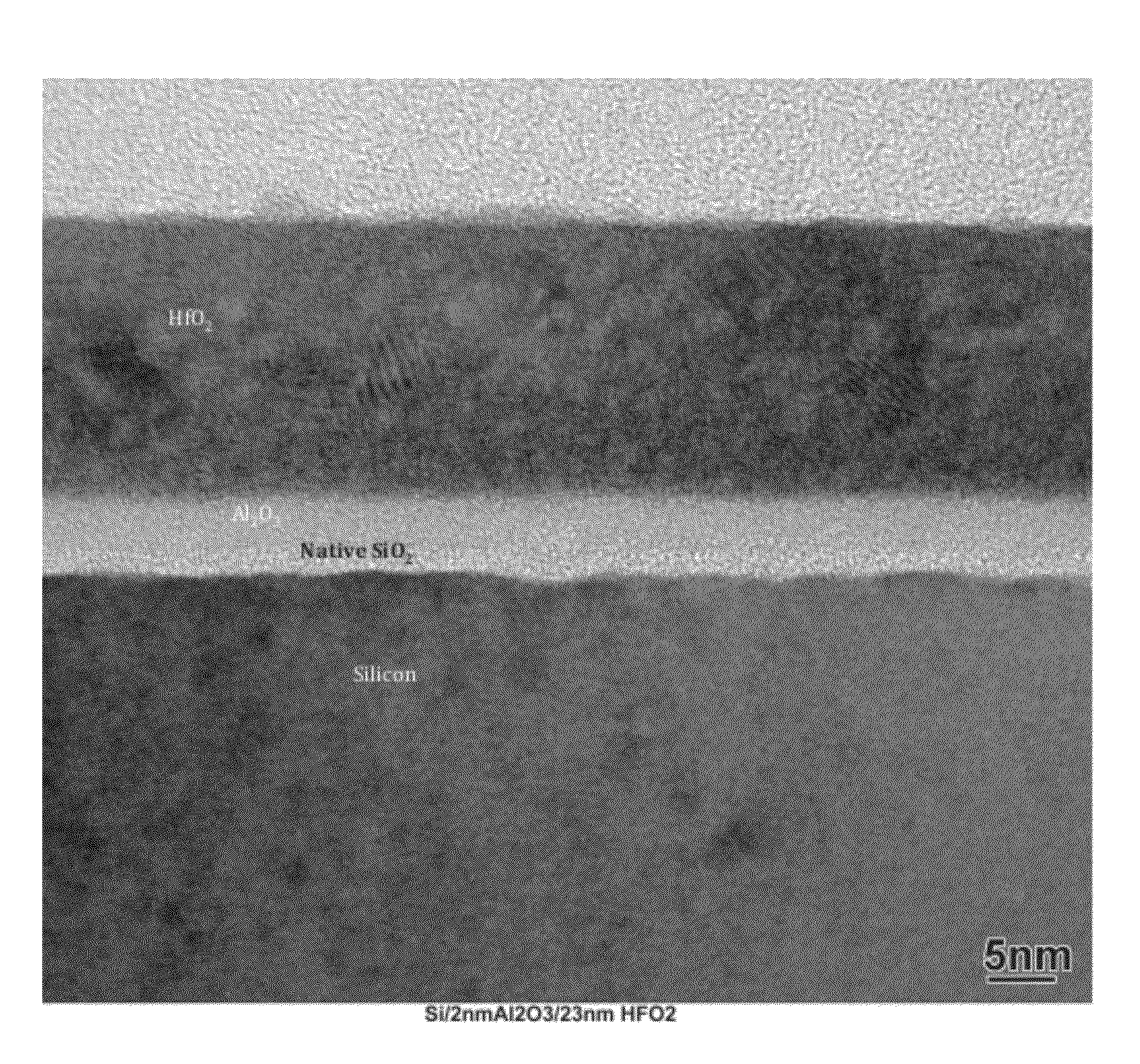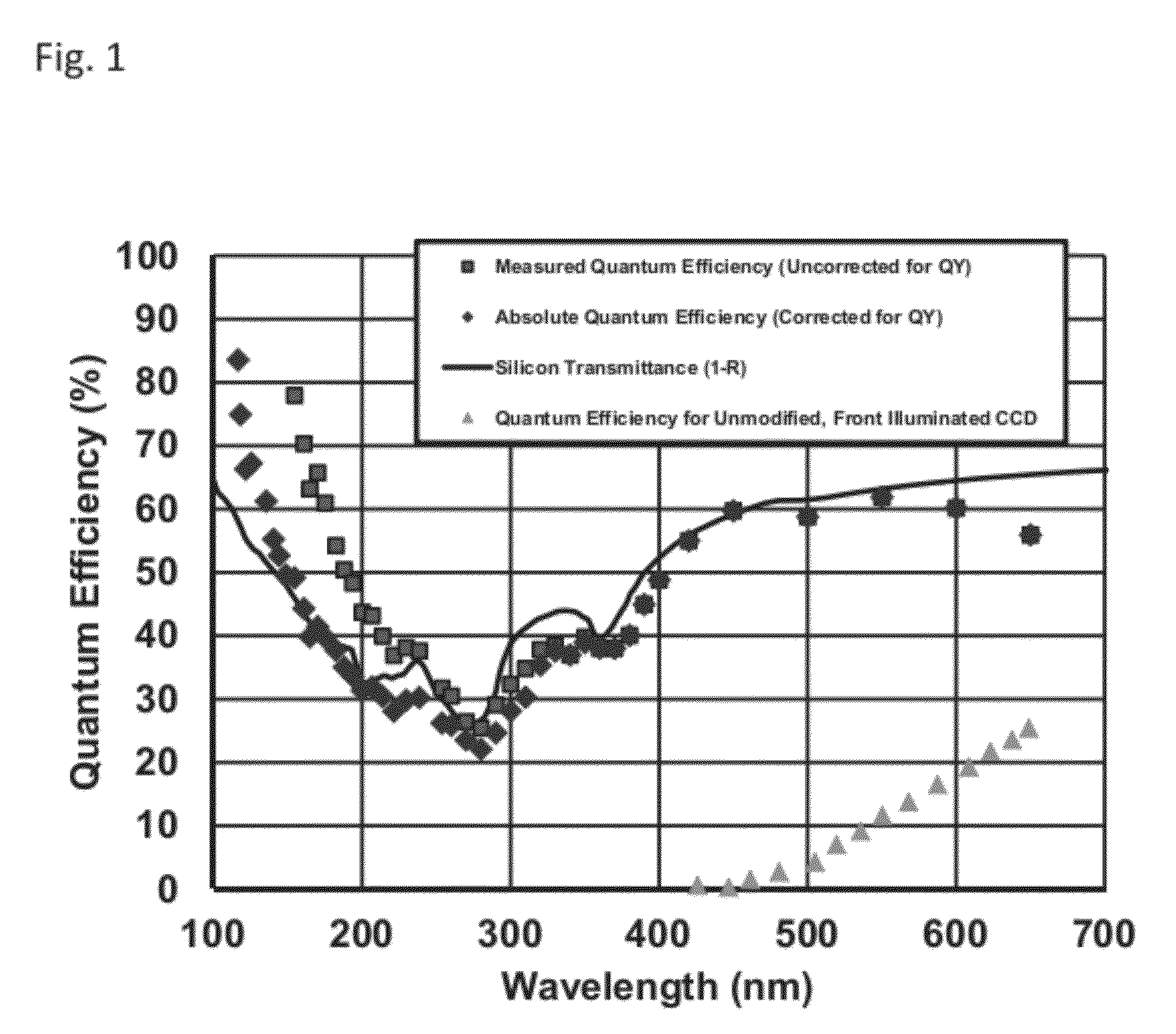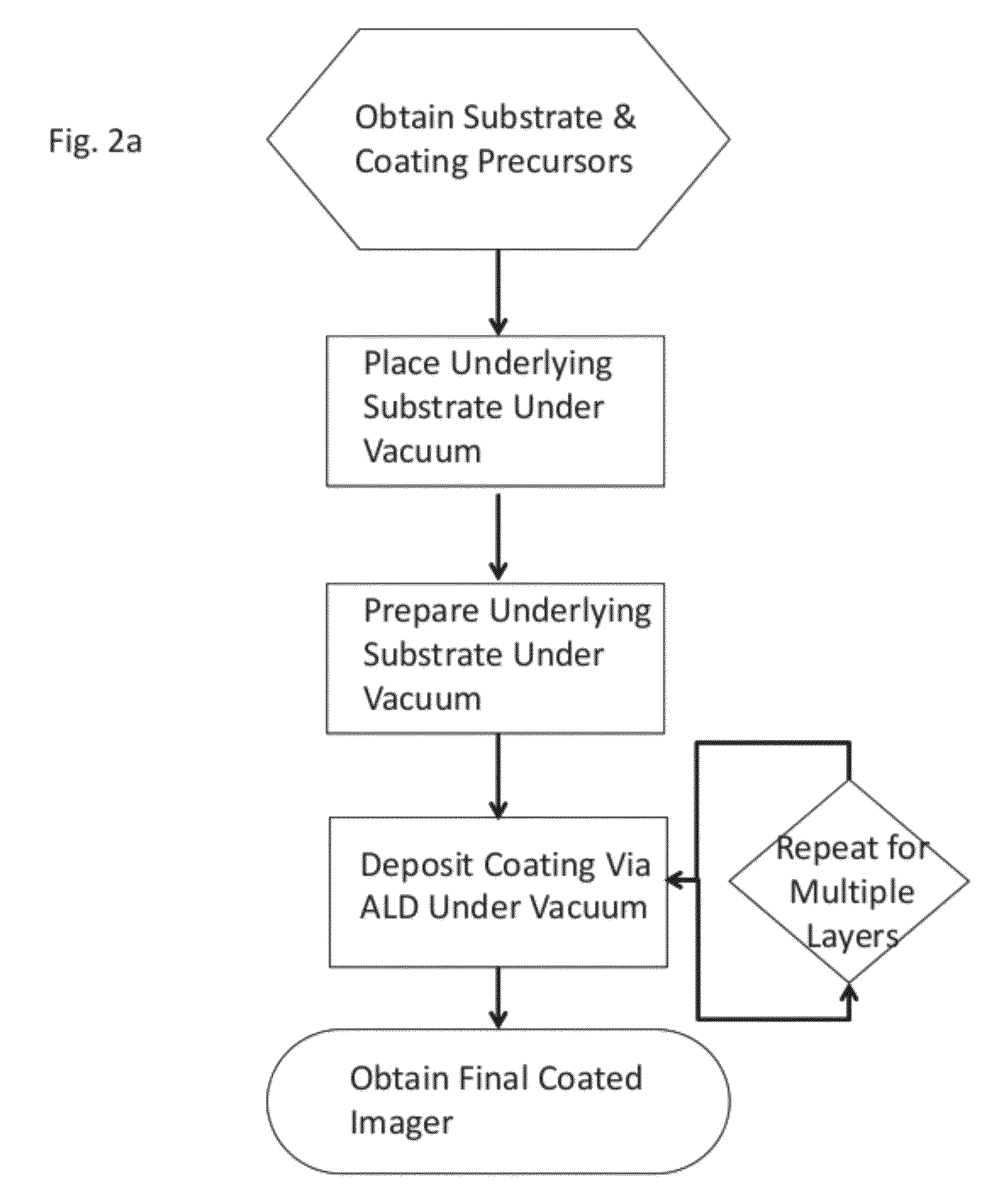Atomically precise surface engineering for producing imagers
a technology of atomically precise surface and imager, which is applied in the direction of electrical equipment, semiconductor devices, radio frequency control devices, etc., can solve the problems of difficult collection of photo-induced current with traditional materials, difficult scientific imaging in ultraviolet light, and short absorption depth of ultraviolet ligh
- Summary
- Abstract
- Description
- Claims
- Application Information
AI Technical Summary
Benefits of technology
Problems solved by technology
Method used
Image
Examples
example 1
Comparison Thermal Evaporation Coating and ALD Coating
[0092]Since remote plasma ALD of hafnium oxide on hydrogen terminated silicon is known to lead to the formation of a hafnium silicate interfacial layer, transmission electron microscopy was utilized to determine whether a similar silicate would form during HfO2 deposition on a delta doped silicon wafer. (See, e.g., Won, Y. et al., Appl Phys Lett 87, 262901, doi:10.1063 / 1.2150250 (2005), the disclosure of which is incorporated herein by reference.) Note that there is an air exposure between the delta-doping process and the deposition of the ALD AR coating, so a native oxide silicon oxide is present prior to the ALD process. The TEM image in FIG. 9 shows that a large interfacial layer has formed between the ALD hafnium oxide (the dark layer at the top of the image) and the crystalline silicon substrate. This is interpreted to be a hafnium silicate. Because this silicate layer was observed, a 2 nm ALD aluminum oxide film was deposit...
example 2
Comparison of ALD and Sputtered Coatings
[0094]FIG. 13 shows the optical properties of the HfO2 ALD AR single and bilayer coatings as compared to the sputtered HfO2 thin films. These three coatings were deposited on 1 inch diameter silicon substrates and the optical properties were calculated by J.A. Woollam inc. using ultraviolet spectroscopic ellipsometry. The roughness values, as estimated by the model fits, for the two ALD samples were substantially lower than the sputtered HfO2 sample (1.3 nm vs 3.5 nm). The superiority of the aluminum oxide / hafnium oxide ALD bilayer as compared HfO2 alone is clear both from the effective index of refraction of the deposited films and the lower absorption coefficient. This supports the conclusion that the hafnium component of the PEALD bilayer stack has a higher density than the sputtered film. It also is consistent with the XPS observation that the HfO2 in the PEALD bilayer has not reacted with the silicon substrate. These TEM, XPS, and ellipso...
example 3
Comparison of ALD Coatings
[0095]FIG. 14 shows the quantum efficiency measured for the three different ALD AR coatings characterized in this study. The performance of one of the uncoated sides of these is presented as a reference for all three CCDs. The thicknesses of these ALD coatings were selected to maximize quantum efficiency over this range, dividing the spectra into three different near ultraviolet (NUV) and far ultraviolet (FUV) bands. The bands selected were: 170 to 200 nm, 190 to 240 nm, and 230 to 300 nm. As shown, through judicious choices of these coatings and their thicknesses, the absolute quantum efficiency can be maintained above 50% for the entire range from 170 nm to 300 nm.
Summary
[0096]To date, no anti-reflection coatings have been successfully demonstrated for silicon based imagers in the 100 nm-250 nm range of the ultraviolet spectrum. The current invention is the first successful approach that can be generalized to this entire wavelength range due to its abilit...
PUM
 Login to View More
Login to View More Abstract
Description
Claims
Application Information
 Login to View More
Login to View More - R&D
- Intellectual Property
- Life Sciences
- Materials
- Tech Scout
- Unparalleled Data Quality
- Higher Quality Content
- 60% Fewer Hallucinations
Browse by: Latest US Patents, China's latest patents, Technical Efficacy Thesaurus, Application Domain, Technology Topic, Popular Technical Reports.
© 2025 PatSnap. All rights reserved.Legal|Privacy policy|Modern Slavery Act Transparency Statement|Sitemap|About US| Contact US: help@patsnap.com



